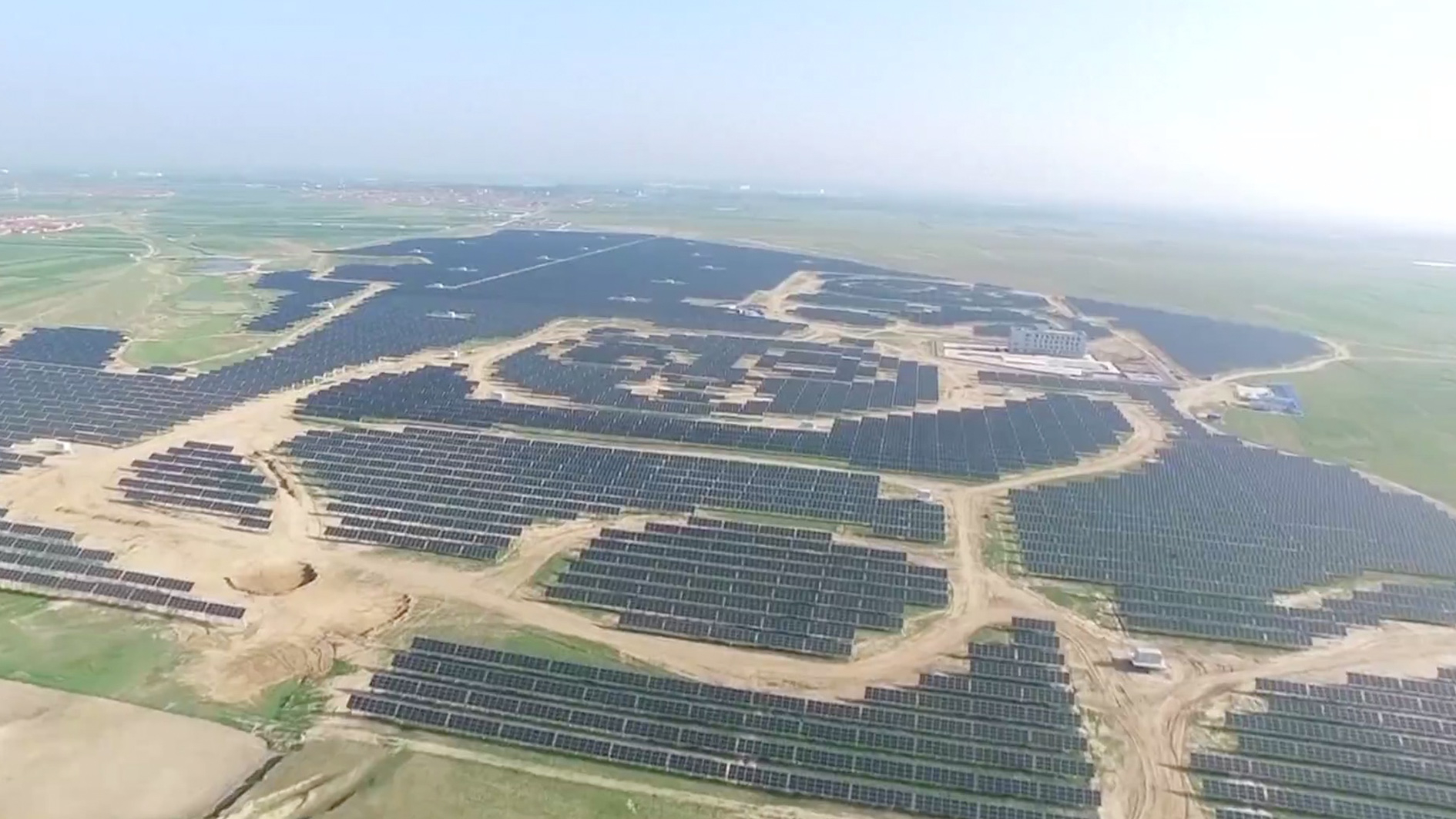01:56

From wood to coal and then to wind, the evolution of energy sources demonstrates China's determination in cutting its green-house gas emissions.
In 2018, the country reduced its greenhouse gas emissions by over five billion tonnes. And China's energy consumption per unit of GDP went down by over 45 percent from the level of 2005, which is equivalent to saving the energy consumption of 1.5 billion tonnes of standard coal.
Meanwhile, non-fossil energy contributed over 14 percent of the energy consumed last year. In 2018, China eliminated excess capacity of over 12 million tonnes in the coal industry, shutting down energy-inefficient and highly polluting coal-fired power plants with a total capacity of 20 million kilowatts.
In the city of Datong, hundreds of thousands of black photovoltaic panels spread at the top of mountains. Known as China's "capital of coal," the city is now taking a transition toward renewable energy.
In 2016, Datong established the world's first panda-shaped photovoltaic power station consisting of 170,000 photovoltaic panels. With an installed capacity of 100 megawatts, it is expected to generate 1.8 billion kwh of solar-powered electricity in 25 years, reducing 1.34 million tons of carbon dioxide emissions.
Datong's move is an epitome of China's efforts to push forward clean energy development. China's increasing environment-friendly development measures are not only reshaping its energy structure.
The country plans to promote new energy vehicle technology and industrial development.
Beijing says the annual sales of new energy vehicles in China are expected to exceed two million units next year. And there were over 970,000 car charging points across the country as of the middle of 2019.
And the country's steps in energy saving and emission cutting won't stop there. China has committed to reducing the carbon intensity of its economy by 60 percent by 2030. And it intends to boost non-fossil fuel energy to 20 percent of its total power use by the same date. Clearly the country will be an increasingly important player in promoting clean energy for years to come.